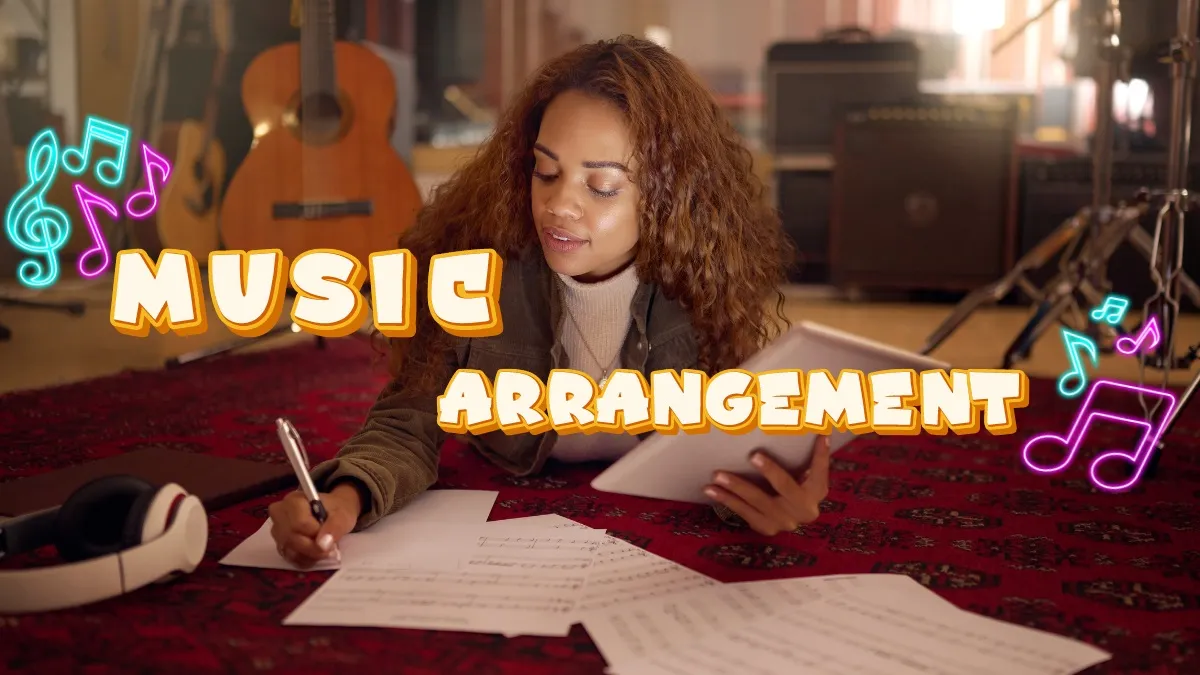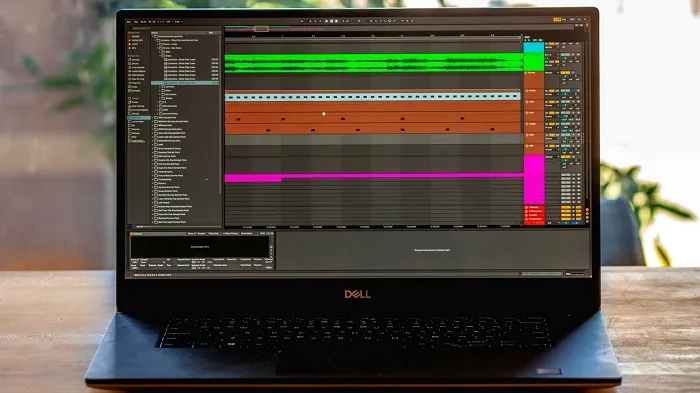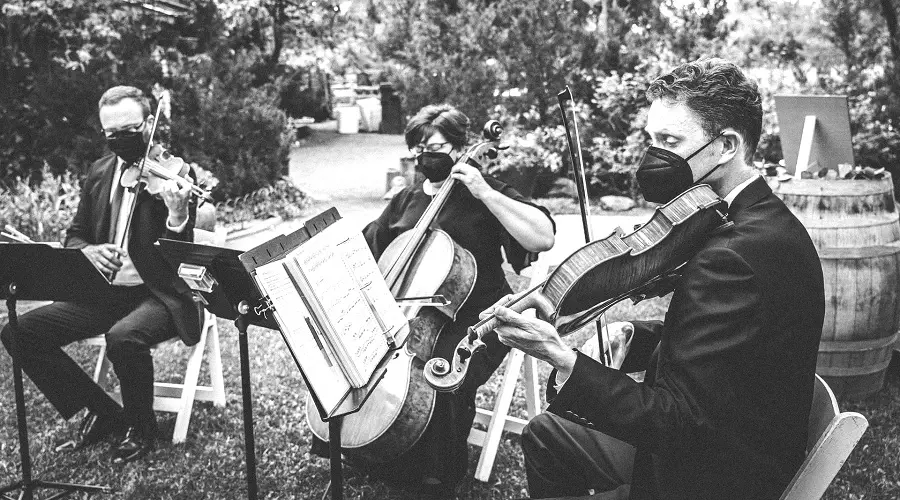Wondering what the attribution “arranged by” in songs means and what the job of an arranger is? This article is for you!
Musical arrangements and reworking compositions have been around for years and years. Some of the greatest musicians used to arrange parts of their work into other pieces and/or adapt other musicians’ work.
Bach, Beethoven, Korsakov, Ravel, and many more contributed to the field of arranging music, but keep in mind that the process of arrangement can have a different meaning when it comes to music production.
In this post, you’ll get to know the meaning of arrangement in music and understand the job of an arranger in music production.
What Does Arrangement Mean in Music?
Arranging is creating music using pre-existing pieces of music. This includes, for example, the arrangements of a particular instrument in a Pop song.
It also includes reworking a composition to make a full score out of it or to make it suitable for other instruments.
History of Arrangement in Classical Music
The art of reworking and music adaptation has been around for centuries. In the Renaissance, intabulation, which is a form of arrangement, was quite popular. It was all about arranging vocal or ensemble pieces to be played on a solo keyboard or lute.
During the same period, English madrigals were published to fit different voices, indicating that they can be played in different ways. However, this was done to exploit several markets.
Arranging was also popular in the Baroque period, during which many great musicians borrowed from other artists or rearranged their own work. A great example of that era is Bach. Some of his works were arrangements of Antonio Vivaldi’s work.
Other musicians, such as George Frideric Handel and Francesco Geminiani have also left their mark in the Baroque period when it comes to arranging. In fact, Handel was most known for reworking his own material.
You can see arrangements in Beethoven’s work. He reworked some of the themes of “The Creatures of Prometheus” to fit in the finale of the “Eroica Symphony” or Symphony No. 3.
With the growing popularity of the piano in the 19th century, arrangements also became way more popular than ever before. Many orchestral transcriptions and chamber pieces were arranged and published to be played on the piano.
Musical reworking or arranging has been a constant phenomenon among great musicians. And this is going to stay strong further in the future.
Is it Illegal to Arrange Another Artist’s Music?
Using compositions that aren’t licensed, or in other words, without getting the permission of the copyright owner, is illegal. You should get permission from a print representative or contact the copyright owner directly.
Arrangement in Classical Music
In Classical music, an arrangement is taking an existing composition and incorporating your work into it. It means reworking or readjusting the original piece.
So, an arrangement is something that was originally written for one instrument or a group of instruments and then arranged for another group of instruments or a solo instrument.
Composition vs. Arrangement
There’s a difference in the way you approach composition and arrangement. When you play a composition, you’ll probably want to play the piece exactly as it’s written. However, when creating an arrangement, the approach is way different.
In music arrangement, you have the freedom to play the piece however you want. You can simplify the piece or make it more complex. Music arrangement is simply making the original piece your own.
Importance of Arrangement
Arrangements give musicians the freedom to play a piece of music on any instrument. Some musical pieces are originally written to be played on certain instruments. When this piece is played on another instrument, some changes might be necessary.
For instance, if a piece of music that is originally written to be played on violin or cello is played on a viola, you’ll have to make some arrangement decisions on the piece to suit the instrument.
That’s not the only role for musical arrangements. Arrangers can also use compositions and rework them to create a full orchestral score based on the original composition.
When songwriters or singers come up with new songs that they want to perform with an orchestra, they have to hire an arranger. The arranger here is the one who adds his magical touch to create a full orchestral score out of the original song.
Arrangements also give the audience a chance to hear the original composition from different perspectives.
Examples of Great Arrangements
- Arrangement of “Pictures at an Exhibition” by Maurice Ravel, which was originally written by Modest Mussorgsky.
- Darrol Barry’s arrangement of “Bohemian Rhapsody.”
- “Violin concerto for 2 violins in A minor opus 3 no. 8,” arranged by Bach and originally written by Antonio Vivaldi.
- Simon Preston’s arrangement of “Trio Sonatas” by J.S Bach.
- Bach and Gounod’s version of “Ave Maria,” originally composed by Schubert.
Arrangement in Music Production
Arrangement in music production means structuring the elements of the song and putting them together on audio production software. You have to ensure that all the song’s elements come together with no issues according to applied music theory.
In other words, arranging is transforming your or the writer’s musical ideas into a complete song. It involves making firm decisions about which parts to include in the song and which to leave out, as well as which parts need rearranging and which to shed light on.
Composition vs. Arrangement
Composing is different from arranging in music production. When you’re composing, you’re just writing music ideas on digital audio software. However, when arranging music you’re assigning all of the elements to their specific locations based on how they’re used in the track.
Arranging here is the step before mixing and mastering. You can also see how arranging can be different in music production than it is in Classical music.
In Classical music, arranging is reworking the original music piece to make it your own or make it work for other instruments or a whole orchestra. In music production, arranging is a necessary step in producing a song. It can’t be eliminated.
Importance of Arrangement
The important role of arrangement appears in delivering the overall theme or the story of the song to the audience. If the song isn’t properly arranged, this will disturb the intended effect of the song on the audience.
Therefore, arranging is a crucial step in any song as it determines its success. Especially now that songs are becoming shorter (2-4 minutes), the arrangement and the production of the song have to be perfect to attract the audience within the first 20 seconds.
Types of Arrangement in Music Production
There are several types of arrangement in music production. Some divide it into structural, instrumental, and spatial arrangements. Others divide it into harmonic, structural, and progression arrangements.
You’ll also find additive and subtractive approaches in music production. The truth is that everyone has their own way of approaching a piece when it comes to arranging.
The arrangement process in music production is dense and consists of several sub-processes. It depends on your musical abilities and your talent, as well as your creativity. Soon, you’ll be able to come up with the techniques and tricks that work best for your creation.
What Skills Does an Arranger Need?
Whether the arranger is reworking a Classical symphony or arranging a Pop song, the necessary skills for the most part are similar.
An arranger needs:
- Orchestration skills and compositional skills.
- Aural ability.
- Understanding music theory.
- Understanding different styles of music.
- Creativity.
- Knowledge about different instruments.
- Using DAW applications and other software programs.
- Organization skills.
- Leadership.
- Patience.
How Music is Arranged
There are several steps in the arranging process. It doesn’t necessarily have to go the same way for everyone, but there’s a general way or basic steps to arranging.
The arranger listens to the composition and decides on the core of the song or the piece, which is usually the melody or several melodies.
Then, the arranger decides on what instruments to use. This is known as instrumentation. This includes vocals, as well.
The arranger selects the key or the keys for the arrangement and how to notate the music. He’s the one who decides on the style of the music, too.
Arranging also requires indicating the tempo or tempos. The arranger must create some variations in his song. This is done by using the following:
- Rhythm.
- Articulation.
- Phrasing.
- Metrics.
- Harmonics.
The process can’t be done without deciding on the structural arrangement of the piece or the song. All of this is written on a music sheet, which creates the musical score – or it’s done in a recording session.
When you see an attribution to the arranger on a song, you can safely assume right away that the person has gone through some, if not all, of the above-mentioned steps.
If you don’t see an arranger’s name, then the composer is the one who did the arrangements.
What is an Arrangement in Music: Conclusion
Whether it’s adapting a violin concerto for the piano or crafting a full symphonic score from a singer-songwriter’s melody, the arranger brings their unique vision and expertise to the table. More than just a technical skill, arrangement requires a deep understanding of music theory, instrumentation, and creative flair.
The arranger’s role is to honor the essence of the original work while imbuing it with fresh perspectives and sounds. In the world of Classical music and Contemporary production alike, the attribution “arranged by” signifies the crucial contributions of these unsung musical alchemists.
As the art of arrangement continues to evolve, the ingenious ways in which composers, producers, and musicians repurpose and reimagine music will undoubtedly remain an integral part of the musical landscape.












